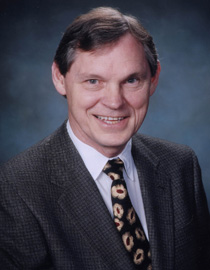 Dr. John Junkins, Distinguished Professor of Aerospace Engineering at Texas A&M University, delivered the plenary lecture at the 55th Israel Annual Conference on Aerospace Sciences at the Technion in Haifa, Israel, on Feb. 25, 2015. The lecture is named in honor of pioneering engineer/scientist Theodore von Karman who founded the Jet Propulsion Laboratory. Junkins' presentation was the 24th offering of the bi-annual Theodore von Karman Lecture.
Dr. John Junkins, Distinguished Professor of Aerospace Engineering at Texas A&M University, delivered the plenary lecture at the 55th Israel Annual Conference on Aerospace Sciences at the Technion in Haifa, Israel, on Feb. 25, 2015. The lecture is named in honor of pioneering engineer/scientist Theodore von Karman who founded the Jet Propulsion Laboratory. Junkins' presentation was the 24th offering of the bi-annual Theodore von Karman Lecture.
Junkins’ lecture was titled “Astrodynamics for Modern Space Operations: Recent Analytical, Computational and Experimental Results.” In his lecture, Junkins discussed the challenges posed by the recent rapid accumulation of space debris in near earth orbit, with particular emphasis on the large derelict spacecraft and spent rocket boosters. At present, 22,000 trackable objects (greater than 10 cm) are known, and many hundreds of thousands of smaller objects are known to be there even though too small to track using conventional means.
The majority of the small debris objects are due to two recent collision events (the 2007 Chinese Fengung C deliberate intercept of one of their dead communication satellites, to demonstrate their space warfare capabilities, and the 2009 US/Russian Iridium/Cosmos accidental collision).
Aside from increasing the probability of collisions, the recent dramatic escalation of debris objects makes the recursive task of making extracting the needed information from tracking data orders of magnitude more challenging. One severe challenge is the informational one, our present catalogs do not include many pieces of dangerous debris from these two collisions, and earlier events that created lesser amount of orbit debris. Methods for tracking space debris have been essentially overwhelmed by the 2007 and 2009 collisions, and we are only recently establishing methodology needed for keeping track of the vastly increased volume of small objects.
Each collision’s debris cloud increases probability of subsequent collisions. This cascading phenomena is partially counterbalanced by atmospheric drag that automatically removes objects with high surface to mass ratio, albeit at too slow a pace to keep up with the challenge before us. The cascading growth of debris and collision frequency is known as the Kessler Syndrome, after Don Kessler, a NASA engineer who foresaw this problem in the 1970s. Due to the increasing collision probability, orbit debris can pose unacceptable safety hazards for space utilization, already the International Space Station must maneuver three or four times per year to avoid debris.
In his lecture, Junkins makes the case that now is the time to develop the needed technology for remediation of space debris and take the national and multinational steps needed to minimize the further accumulation. If we limit attention to the largest low earth orbit objects with intact nozzles, there are approximately 3,000 large derelict objects in the mass range from 100 kg to 8,000 kg. Studies indicate that removing five to eight of these large objects per year will flatten the growth of orbit debris and is recommended as a high priority thrust for civilian and military space agencies worldwide.
Under NASA sponsorship, a novel approach has been investigated by Junkins that seeks to utilize the nozzle as a universal “docking port” enable capture of these objects to send them on re-entry trajectories to burn in the upper atmosphere, and for the larger objects to be safely guided into an ocean landing zone.
There are multiple challenges with this approach including autonomous sensing and control of sufficient fidelity and reliability; design of capture mechanisms and control strategies to incur minimal risk of creating more collision debris; and developing new designs that make the debris removal missions affordable.
Junkins outlined the design of a capture device and discussed experiments wherein a probe is inserted into the nozzle and deploys an inflatable bladder in the pressure so the nozzle is firmly captured for disposal of the debris. Controllable pressure in the bladder can be used to make the approach broadly applicable to different sized nozzles and to enable ease of release once the object is on the desired re-entry trajectory.
In addition to addressing the challenges of removing debris, Junkins also treated the computational issues implicit in tracking, identifying and doing hazard analysis for space debris. These computational challenges must be addressed to establish the high fidelity catalogs needed for collision avoidance computations, new spacecraft mission planning and, especially, to prioritize the most dangerous objects for removal. In particular, he reviewed recent dramatic speedups that have been achieved by the Texas A&M team in solving the most fundamental computational problem in Celestial Mechanics, namely highly parallelizable new methods for solving the differential equations of orbital motion.